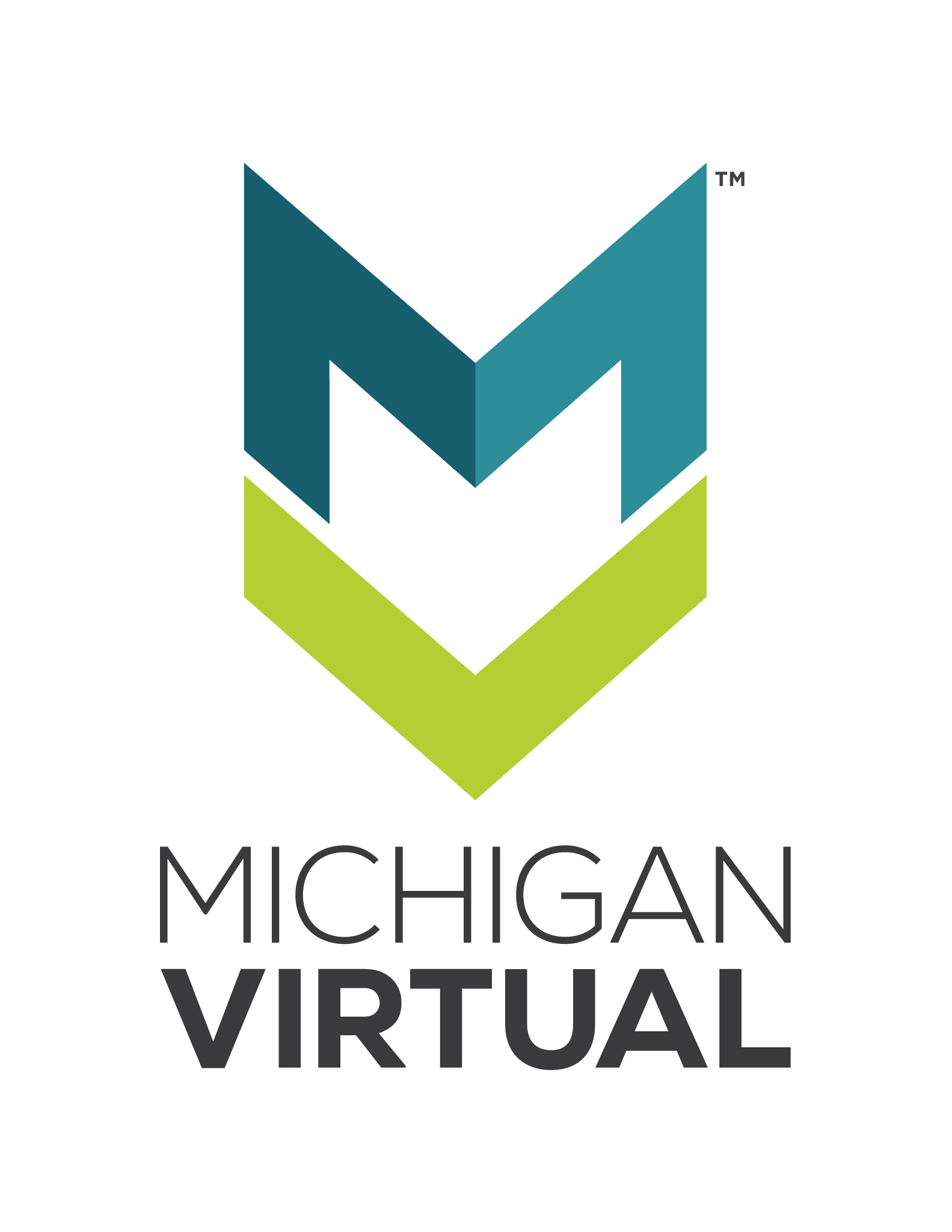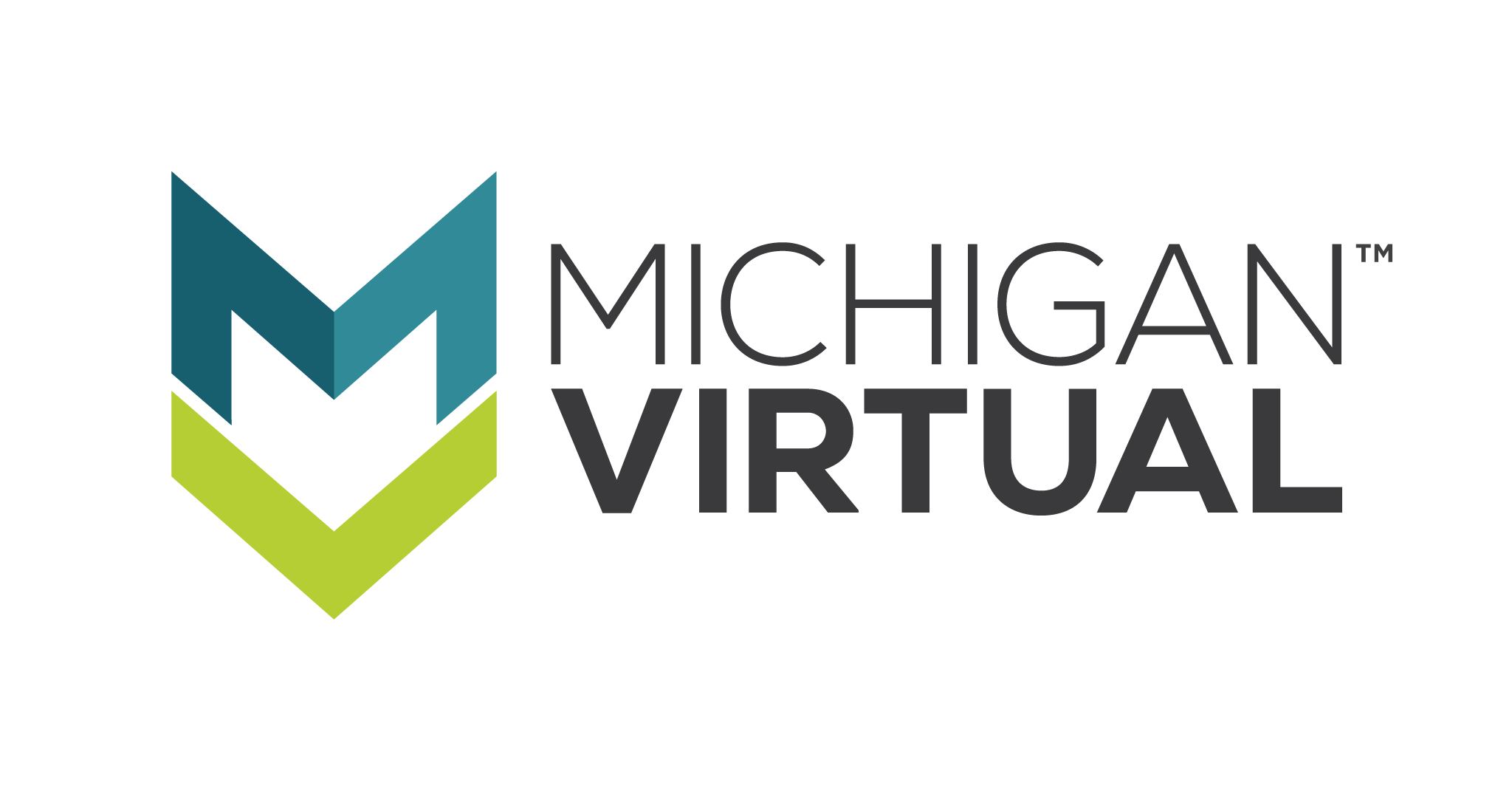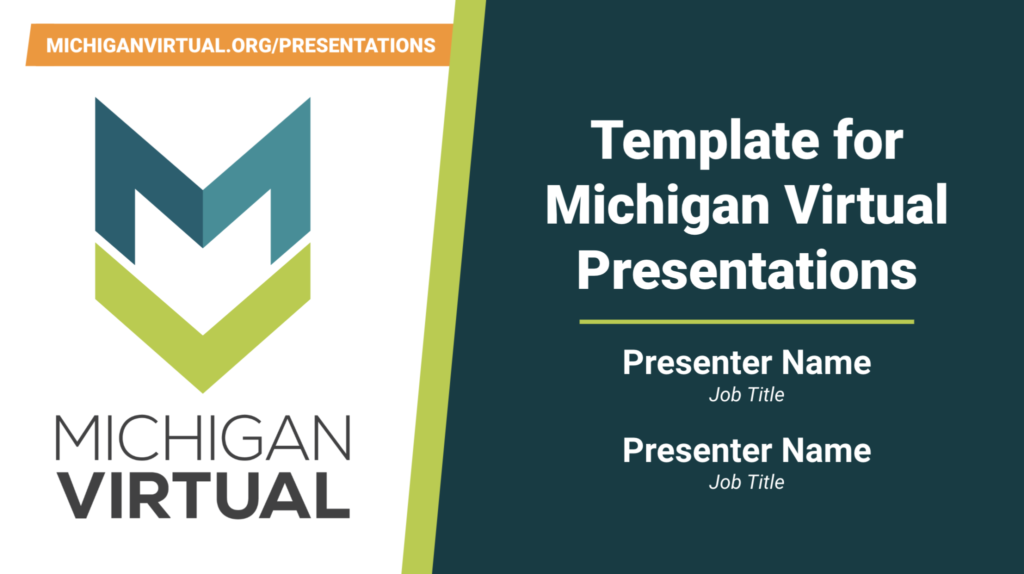Logo & Usage
Each of the logos is a representation of Michigan Virtual and as such should always remain consistent in clarity, presentation, and representation. The four logo options available provide users with alternative options to best suit various scenarios. The preferred version is the horizontally stacked version, where the symbol is on the left side of the stacked words ‘Michigan Virtual.’ These files are saved with whitespace intentionally added. No text or graphic should enter the white space shown in the logos.
Regardless of which logo is selected, each should be used with caution to ensure a true, unaltered representation of the Michigan Virtual logo. All logos should never be turned upside-down, tilted, or skewed from their original orientation.
The elements of the logo should never be broken apart or changed. No additional elements should be added within the logo. Additionally, no attempts should be made to mimic typeface and fonts included in existing logo assets.
The .zip file below contains the four different logos in three different color options (full color, black, and white) and in four different file formats (.svg, .pdf, .png, and .jpg). Please use the .svg and .pdf formats as the primary image format where possible, using the .png as a fallback for use cases where a .svg or .pdf isn’t accepted or allowed. The .jpg format should be used as a last resort, as it doesn’t have any transparency built in, and is the least versatile file format.




